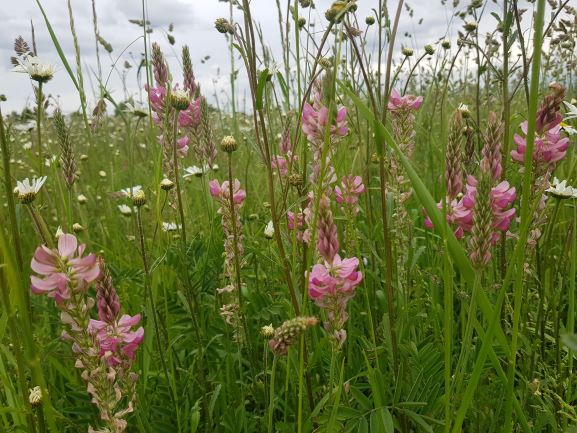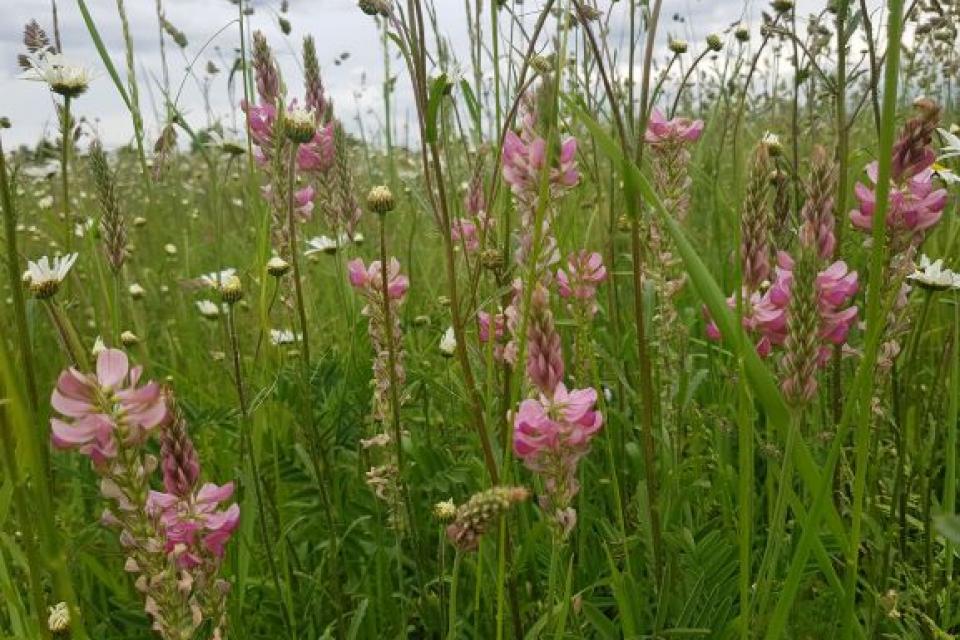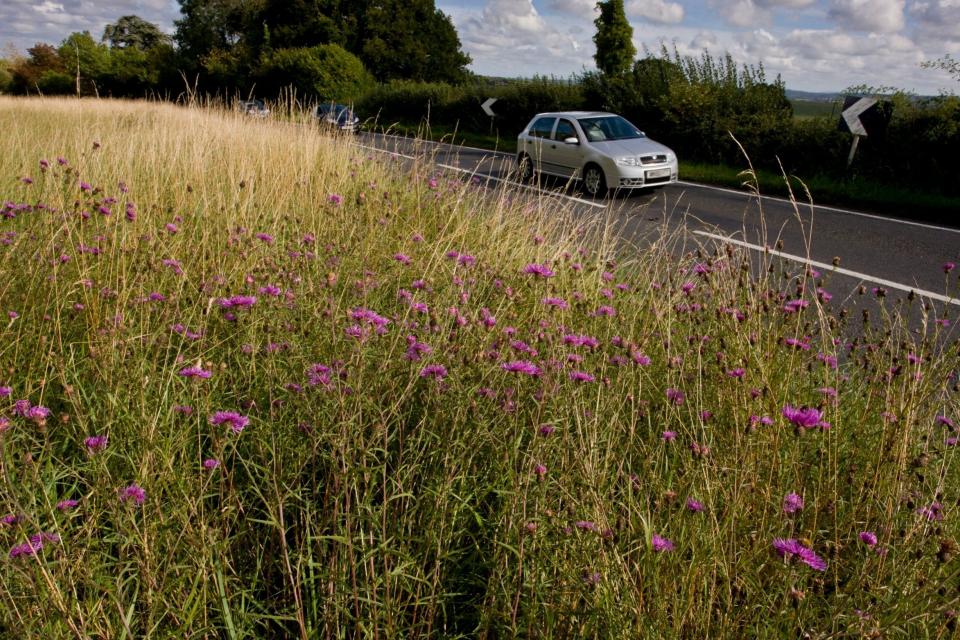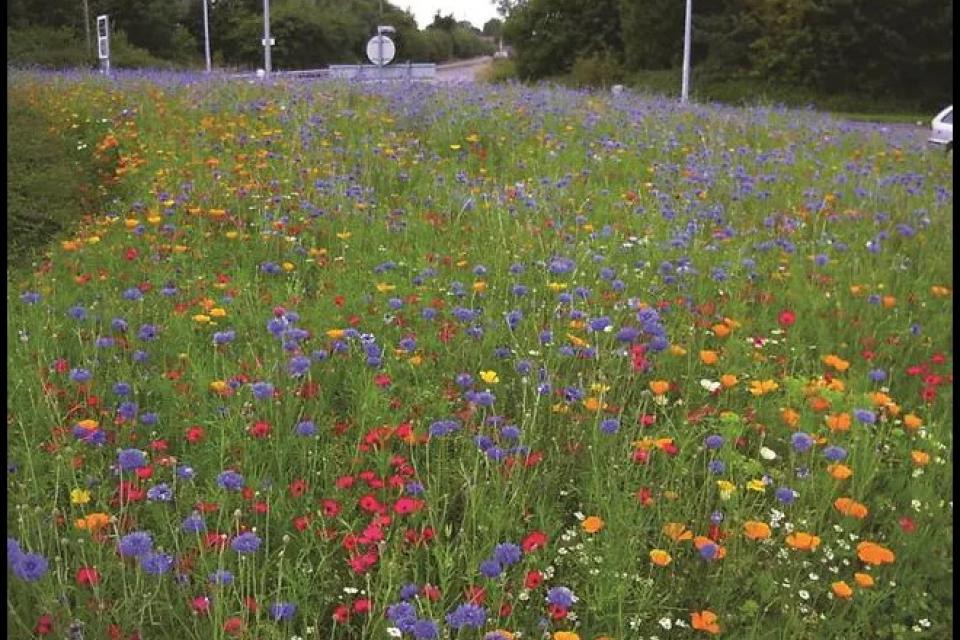Wilding

Here at St Albans City and District Council, we have been increasing our focus on issues surrounding sustainability and the environment, culminating in our unanimous declaration of a climate emergency at Full Council in July 2019.
We have been exploring ways in which we can safeguard the environment for the future, as well as ways that we can use our assets to help us achieve this. Working with others will be key to our success and the team has been engaging with our network of partners to further our collective goals, share ideas and develop the expertise needed to successfully deliver schemes and projects to benefit the environment across the district.
We will work with local communities and environmental organisations to create more habitats for wildlife across the district.
Nominate a location for consideration
What is wilding? Toggle accordion
The Parks and Green Spaces Team, following the example of other local authorities across the country, is currently exploring the wilding of our grass verges and open spaces throughout the district.
Wilding is stepping back from the intensive management of sites and allowing the natural growth of native vegetation that otherwise would have been supressed. Through wilding, wildlife's natural rhythms create wilder, more biodiverse habitats. Wilding of previously intensively managed areas can also bring a number of ecological and social benefits. These include:
- Reducing the carbon footprint of the local area by facilitating the growth of more vegetation while reducing the use of fossil fuels associated with intensive land management
- Managing land without pesticides, which restores the nutrient quality of the soil
- Providing more areas for pollinators to flourish
- Creating more suitable and sustainable habitats, which will enable plant and animal species that were once common in the local area to return helping to reconnect the local community with the natural world. In some cases, this has been proven to reduce stress
- Creating ‘wildlife corridors’ across the district, which will help wildlife to move safely between different habitats
- Restoring naturally functioning ecosystems, which can help prevent floods, store carbon and provide us with cleaner, healthier air
Types of wilding Toggle accordion
There are several different options of wilding management currently being explored by the team. Many people associate wilding as producing fields of brightly coloured, aesthetically appealing wildflowers. However, the reality is that the wildflower meadow, a particularly labour-intensive wilding method, is the only one likely to yield these results. More commonly, wilding produces areas of long grass, bushes and brambles that, whilst not creating the aesthetically pleasing features of a wildflower meadow, provide a sustainable environment for animals and insects to flourish.
One of the key principles of wilding is to “mix it up”. Mixing it up is based on the principle that different plants, insects and animals require different ecological conditions. Therefore, greater diversity in the management of grass verges and open spaces is essential for a flourishing environment. The need to help facilitate diverse and sustainable ecosystems is a pressing issue, with 56% of species in the UK in decline and 15% threatened with extinction.
The Parks and Green Spaces Team is currently exploring various methods of wilding to assess which will achieve the best results for the district. As well as considering the desired results, the team are also examining the amount of maintenance these areas will require, an equally important factor in any decision to carry out wilding.
Please visite the nature & biodiversity section of our website form more information
Some of the different types of wilding the team are looking into are listed below.
| Annual Cut | Allows the plants that are native to that piece of land to grow and flower. |
| Leaving Highway verges to grow naturally | This will lead to brambles and, possibly trees, growing on the land. Hertfordshire County Council as the Highway Authority will assess (highway safety) each proposed location for it suitability to be rewilded. |
| Summer Meadow - Creation and Expansion | Produces the aesthetically pleasing results that are comparable to the well-known ‘wildflower meadow’. |
| Wildflower meadows | This is the most aesthetically pleasing form of wilding. However, the management regime would be labour-intensive with the need to prepare the land and sow seeds. |
Rewilded Sites Toggle accordion
A number of sites were identified around the District.
Please use your mouse to zoom in and out and move around the District.
Further details about the Wilder St Albans Project, and how you can get involved, can be found on the Herts and Middlesex Wildlife Trust website.



